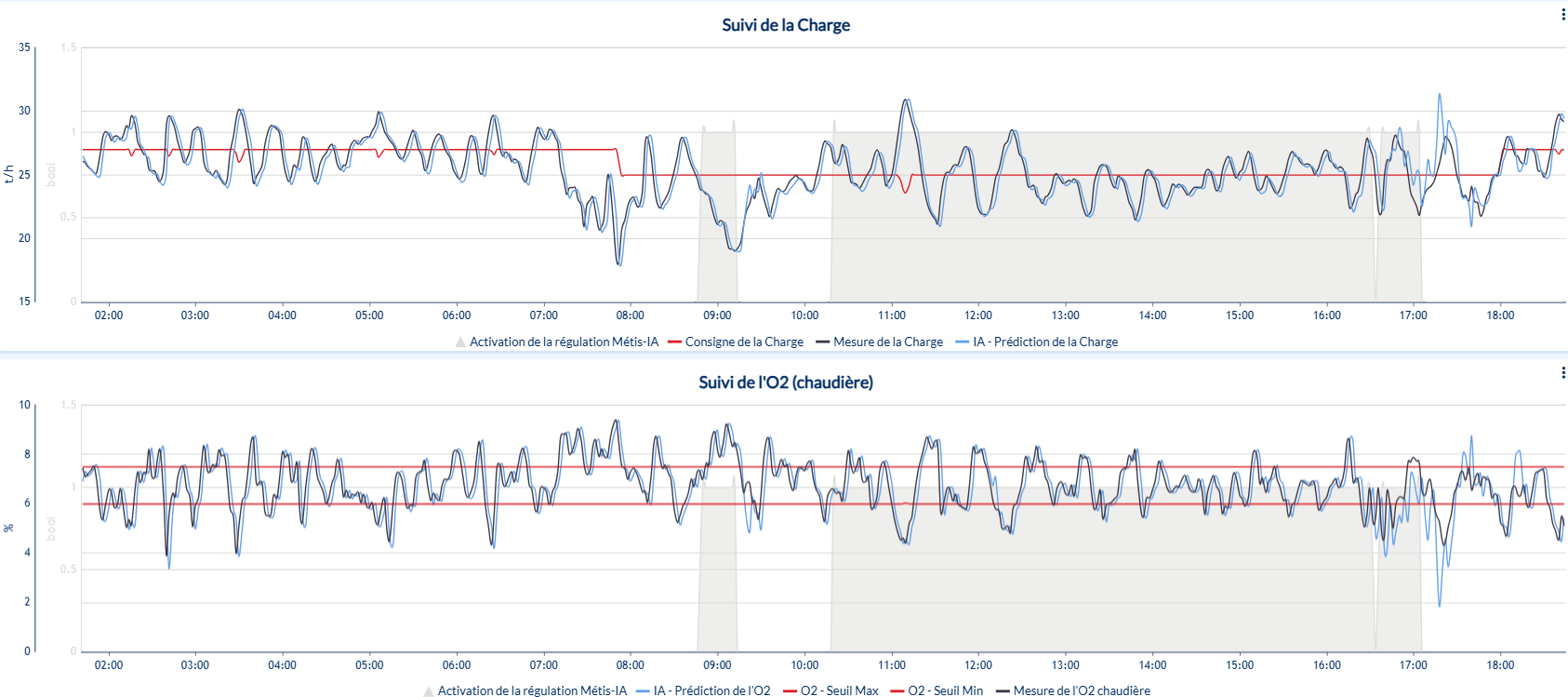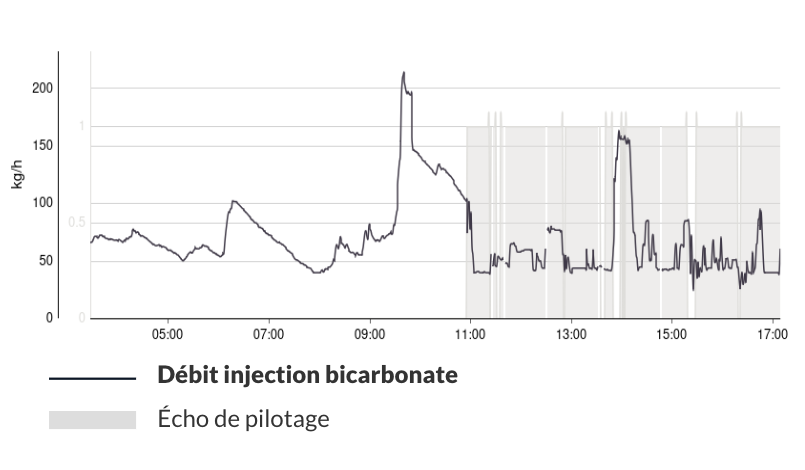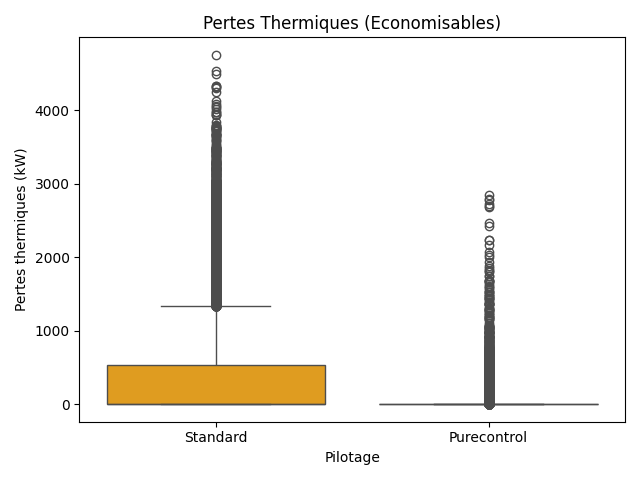Optimization of EVs: 3 levers to improve energy and environmental performance
.jpg)
Energy Recovery Unit (EVU) operators must constantly juggle sometimes contradictory requirements: guarantee stable combustion despite a heterogeneous fuel, meet the needs of the heating network, while remaining in compliance with environmental regulations. All this, with limited human resources, installations already optimized by conventional automation and increasing pressure on operating costs.
In this context, performance levers are changing: they no longer reside only in equipment or hardware investments, but in how to intelligently manage the entire system.
Here are the three concrete levers to improve their overall performance.
1. Stabilize Combustion to Maximize Steam Efficiency
The first lever relates directly to the control of the oven. Unlike a biomass or gas boiler, a VVE processes unpredictable fuel. This variability makes combustion unstable, difficult to regulate and is a source of drifts that degrade thermal performance.
To meet this challenge, Purecontrol is developing a digital twin of the oven: temperature, oxygen content, air flows, grate speed, fuel supply. This Model Powers an Optimization Engine That Automatically controls several critical parameters such as the supply of primary and secondary air, and the speed of arrival of the fuel.
The objective is to maintain combustion in a so-called “perfect” zone, where O₂ levels, boiler temperature and thermal power are in balance. The benefits are immediate:
- Improving Energy Efficiency
- Superior Quality of the Smoke to Be Treated
- Stabilization of steam generation guaranteeing better energy recovery.
This approach helps to improve energy efficiency, but beyond the figure, it is above all the continuous control of the process that makes the difference for operators, By making it possible to limit operating losses.

2. Reducing Emissions and the Consumption of Reagents for Smoke Treatment
Smoke treatment is a key position in the operation of an EV, both to meet regulatory requirements (NOx, NH3, HCl, SO₂, dust, etc.) and to control the costs associated with chemical consumables. However, in many installations, the classical approach is based on dosing instructions intended to ensure compliance in all circumstances, which results in chronic overconsumption of reagents or exceeded VLE (operating limit value).
Purecontrol offers intelligent regulation of reagent injections, Based on a Continuous analysis of the quality of smoke and on the modeling of the behavior of system. Control is based on concentration measurements at the outlet of the oven; in the absence of a physical sensor, these values can be estimated using a virtual probe, i.e. a predictive model reproducing the behavior of the real measurement. The device also takes into account the dynamics of combustion upstream and the delay in the propagation of pollutants through the various treatment stages.
By adapting the injections as accurately as possible, the solution makes it possible to significantly reduce overdoses without ever compromising compliance goals.
Field feedback shows clear results:
- Between — 20% and — 40% reduction in reagent consumption,
- Of Emissions Maintained Below Regulatory Thresholds with greater stability,
- A reduction in drifts, which reduces the cognitive load for teams and reduces the number of alarms or manual adjustments.
This control can also have an indirect but structuring effect: by limiting the overconsumption of reagents, it is likely to reduce the formation of secondary residues (dust, salts, neutralization by-products).

3- Optimizing the heating network: controlled production on demand
Let's now look at the case of biomass or CSR boilers integrated into RCU (urban heat networks) or industrial heating networks, in which they coexist with other sources such as biomass, gas or even the valorization of biogas. This energy mix offers flexibility, but it also complicates management.
The operation of these installations faces 3 problems:
- Meet the network's heat demand,
- Limit Heat Loss in Air-Cooling Towers
- Avoid or minimize the use of fossil sources such as gas boilers.
To achieve this, it is necessary to finely control the various sources of the network, taking into account both external conditions, consumption profiles and technical constraints specific to each installation.
It is in this context that Purecontrol offers a solution Able to anticipate and orchestrate the various heat sources according to the real needs of the network, business constraints and environmental goals.
The solution is based on a heat demand forecasting model, built on the basis of meteorological data, seasonality, calendar and consumption histories.
Anticipating production demand allows Purecontrol to Control the key components of the network in real time, in particular the load setpoint for the CSR boiler (Solid Recovered Fuel), in order to:
- mobilizing the most simple and least expensive sources as a priority,
- ensure continuity of service,
- Reduce the carbon impact of the network.
This approach guarantees better synchronization between production and consumption, reduces heat losses and limits the use of fossil fuels. Operators gain in performance, stability and economic control, without modifying the existing infrastructure.

Managing Energy Recovery Units as intelligent and adaptive systems
Views are on longer simple waste treatment plants. They are strategic energy assets, integrated into complex networks and subject to high economic and environmental expectations. In this context, optimization can no longer be limited to manual adjustment or fixed instructions. It must rely on solutions that are able to analyze, anticipate and adapt constantly to a changing context.
By activating these three levers, it becomes possible to move from sustained exploitation to controlled performance. The solution integrates seamlessly without modifying existing automatons or adding hardware. The result: more stability, more sobriety, less stress for teams and better overall site performance.

